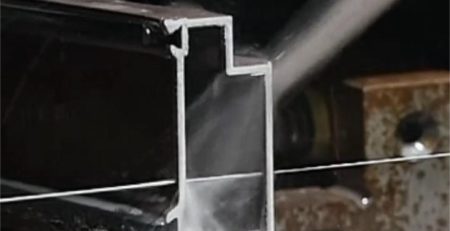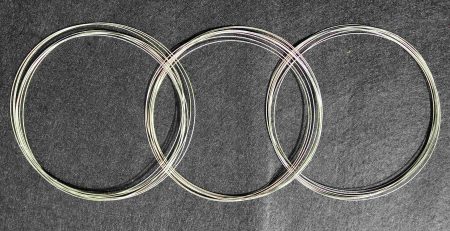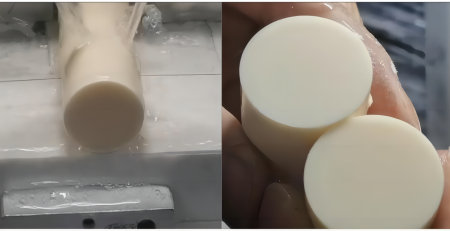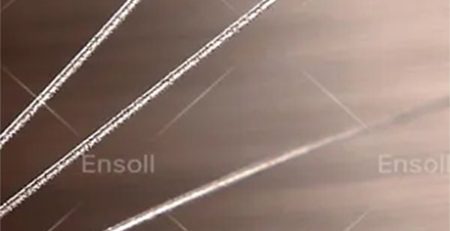Comprehensive Guide to Alumina Ceramics
Alumina ceramics, also known as aluminum oxide ceramics, are a versatile class of ceramic materials widely used in various industries. In this comprehensive guide, we will delve into the world of alumina ceramics, exploring their composition, properties, applications, and cutting methods. Let’s get started!
 What are Alumina Ceramics?
What are Alumina Ceramics?
Alumina ceramics are a type of ceramic material primarily composed of aluminum oxide (Al2O3). They are known for their exceptional hardness, high melting point, and excellent electrical insulation properties. Alumina ceramics can be classified into different grades based on their purity and specific properties.
Characteristics of Alumina Ceramics:
- High Hardness: Alumina ceramics exhibit excellent hardness, surpassing that of most other ceramic materials. This property makes them highly resistant to wear, abrasion, and scratching.
- High Temperature Resistance: Alumina ceramics have a high melting point, allowing them to withstand extreme temperatures without losing their structural integrity.
- Electrical Insulation: Alumina ceramics possess excellent electrical insulation properties, making them suitable for applications in electrical components and insulators.
- Chemical Resistance: Alumina ceramics are highly resistant to chemical corrosion, making them ideal for use in harsh chemical environments.
- Biocompatibility: Certain grades of alumina ceramics are biocompatible, meaning they can be used in medical and dental applications without causing adverse reactions in the human body.
Applications of Alumina Ceramics:
Alumina ceramics find extensive use in various industries and applications, including:
- Electronics: Alumina ceramics are employed in the manufacturing of electronic components such as insulators, substrates, circuit boards, and semiconductor parts.
- Mechanical and Structural Components: Their high hardness and wear resistance make alumina ceramics suitable for applications such as bearings, seals, pistons, cutting tools, and wear-resistant parts.
- Medical and Dental: Alumina ceramics are used in the production of dental implants, prosthetics, surgical instruments, and joint replacements due to their biocompatibility and durability.
- Chemical and Process Industries: Alumina ceramics are utilized in chemical reactors, valves, nozzles, and other components that require resistance to corrosion and high temperatures.
- Aerospace and Automotive: Alumina ceramics find applications in aerospace components, engine parts, spark plugs, and sensors due to their high-temperature resistance and electrical insulation properties.
Cutting Methods for Alumina Ceramics:
- Alumina ceramics are extremely hard and brittle, making their cutting and shaping process challenging. Common cutting methods for alumina ceramics include:
- Diamond Tool Cutting: Diamond tools, such as diamond blades or grinding wheels, are commonly used for cutting and shaping alumina ceramics. These tools are embedded with industrial-grade diamond particles, known for their exceptional hardness and abrasion resistance. The diamond particles on the blades or wheels create a cutting edge that can effectively penetrate the hard surface of alumina ceramics.
However, when it comes to more intricate and precise cutting requirements, diamond wire loop cutting is often preferred. Diamond wire loop cutting is a technique that utilizes a thin wire embedded with diamond particles, known as diamond wire loop, to cut through alumina ceramics. The diamond wire loop is guided by a set of pulleys and driven by a motor, creating a continuous cutting loop.
 Laser Cutting: High-powered lasers are employed to cut and engrave alumina ceramics with precision. Laser cutting provides a non-contact and heat-controlled method for shaping ceramics.
Laser Cutting: High-powered lasers are employed to cut and engrave alumina ceramics with precision. Laser cutting provides a non-contact and heat-controlled method for shaping ceramics.
- Waterjet Cutting: High-pressure waterjet with abrasive particles can be used to cut alumina ceramics. This method offers precise cutting without causing excessive heat or damage to the material.
In conclusion:
Alumina ceramics are a remarkable class of ceramic materials with exceptional properties and a wide range of applications. Their unique combination of hardness, high-temperature resistance, electrical insulation, and chemical resistance make them indispensable in various industries. Understanding their composition, properties, applications, and cutting methods is crucial for utilizing alumina ceramics effectively in different fields of engineering and technology.










